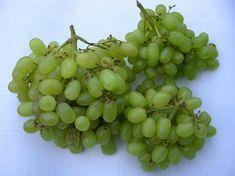
Concerns have once again been raised about the utilisation of sulphur dioxide as a postharvest fungicide for table grape amidst recent fears that permission of use may not be granted in the latest amendment to the EC directive concerning the use of food additives.
Sulphur dioxide serves as a dual purpose for table grape, primarily to inhibit botrytis, but also to maintain stem condition. The latter is achieved by preventing the breakdown of chlorophyll in the stem, thus giving the appearance of a green stem despite the onset of stem desiccation.
Athanasios Mandis, technical manager at JPFD, believes that existing alternatives have limited potential, for example, passive modified atmosphere packaging (MAP) does not encourage the accumulation of high carbon dioxide levels essential to induce immunity within the product, while other [chemical] alternatives may pose increased health risks or hazards.
Frutavit was established in Israel in 2001 as part of the Technology Incubator created by the county’s ministry of industry and trade, and is supported by the Israeli Chief Scientist Ministry. It has developed a range of postharvest solutions based on natural plant extracts. Dr Adnan Sabehat, managing director of Frutavit, says: “The range of Frutavit Solutions, developed for fresh and prepared fruit and vegetables, works by harnessing the anti-oxidant and anti-microbial properties of plants [and their derivatives] to provide a natural protective barrier against discolouration, botrytis and other fungi. The solutions also contain natural blockers to slow down the rate of senescence.”
Mandis adds: “The solution for table grape has been in development over the last two years. Recent trials conducted at the Volcani Centre, Israel, showed comparable readings between Frutavit and sulphur dioxide treated Thompson grape after 35 days storage at 0°C. However, the real benefits of the solution were experienced when the product was placed in ambient conditions. The Frutavit treated product maintained an excellent condition whereas the control, treated with sulphur dioxide, began to deteriorate significantly within a couple of days. This complements trial work undertaken in the UK over the year.
“I think it’s fair to say the trials were conclusive. But Frutavit still needs to get official approval for the products. It won’t take as long as it would to gain approval for a chemical based pesticide because the ingredients of the product are already food grade products and generally regarded as safe. It is aimed that the Frutavit solution for table grape will be commercially available next year.”
Based on these findings JPFD set up a trial in order to pursue environmentally-sound alternatives to sulphur dioxide. “We would like to to be in a position where we can switch from sulphur dioxide if and when the day comes that its use is prohibited. Furthermore, as a supplier, we need to constantly seek ways in which to reduce chemical loading without compromising on product quality and condition. Quality and food safety go hand-in-hand. Our customers expect no less,” says Mandis.
During the trial, he monitored untreated and Frutavit treated table grape inoculated with botrytis spores. The objective was to accelerate shelf-life deterioration and to see how the Frutavit treated grape compared against the control.
Trials have already taken place in Israel, South Africa, Greece and Egypt and there has been no indication that the solution cannot work equally well in production regions around the world. “The potential is very exciting,” says Mandis. “Not only are we looking at significant enhancement of product quality and performance, but we would be able to eliminate sulphur dioxide from the process. It is inevitable that at some stage SO2 will either not be permitted for use or replaced by new technology. Now we have a real alternative and, through extended shelf-life and product quality improvements, UK consumers, who will be consistently more satisified with a product that performs better and for longer after purchase, will be the beneficiaries.”
Technological advances often add costs into the supply chain, but the financial implications of replacing the sulphur pads with the Frutavit solution are another strong sales point he says. “Sulphur pads cost from 15-16 cents a box, a cost that is absorbed into the supply chain,” says Mandis. “Although we have no definitive cost for the solution, at the moment it appears that the cost per box will be very similar.”
The solution has been developed in spray form and it looks at this stage as if it could be applied either pre- or post-harvest, which offers the additional potential of replacing copper and sulphur based fungicides in the pre-harvest treatment cycle.
JPFD’s group marketing manager Dickon Poole recognises that the technical aspects of the process would largely be lost on the consumer, but says: “I think there is marketing potential here, but it has traditionally been difficult to get this type of development into an articulate on-pack message.
COMMERCIAL BENEFITS, ACCORDING TO FRUTAVIT
• User-friendly and easy to apply - no extra costs involved in application;
• Higher quality produce - less waste;
• Can be used for seafreight as well as airfreight;
• No detrimental effect in case of produce handling abuse;
• Improved shelf life, as opposed to other technologies that reduce shelf life post-storage;
• Adds value to the entire supply chain.



